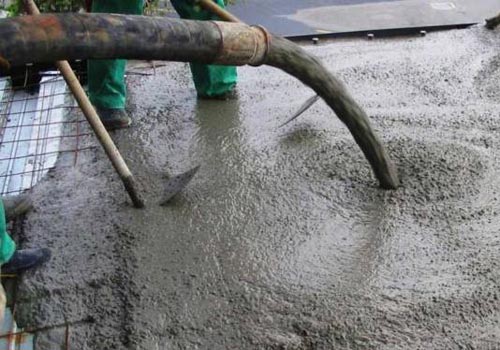At present, water reducing admixtures mainly include lignin series, naphthalene series, resin series, molasses series and polycarboxylic acid, etc., and various types are also divided into air-entraining agents and non-air-entraining agents. According to its influence on the agglomeration and hardening speed of concrete, it can be divided into three types: ordinary type, early strength type, and retarded type.
Lignosulfonate concrete admixture
The main variety of lignin water reducer is sodium lignosulphonate, which is a brownish-yellow powder obtained by evaporating, sulfonating, concentrating, and spray-drying the waste wood pulp after alcohol extraction. In addition, there is a calcium lignosulfonate water reducing agent. The suitable mixing amount is 0.2%~0.3%, and the water reduction rate is about 10%. If the water is not reduced, the slump can be improved by about 10cm, and the 28d strength of concrete can be improved by 10%~20%. If the strength remains unchanged, cement can be saved 10%. However, calcium lignosulfonate and sodium lignosulfonate have a retarding effect on concrete, generally retarding for 1 to 3 hours, and the retardation is stronger at low temperatures. And the lignosulfonate admixture is an air-entraining water-reducing agent, which increases the air content of concrete from 2% without mixing to 3.6%, which has an impact on the strength of concrete but is beneficial to the frost resistance of concrete.

Naphthalene based superplasticizer
Naphthalene based superplasticizers are raw materials of naphthalene and naphthalene homologs fractionated from coal tar. It is formed by sulfonation and condensation. Polynaphthalene sulfonate has a strong dispersing effect on cement, so its effects of reducing water, strengthening, and improving durability are better than lignin, and it is a high-efficiency water-reducing agent. Generally, the water reduction rate is more than 15%, the early strength is obvious, and the concrete 28d strengthens more than 20%. The appropriate dosage is about 0.5% to 1.5%, and the pH value is 7 to 9. It is suitable for all concrete projects and is more suitable for the preparation of high-strength concrete and fluidized concrete.
Polycarboxylate water reducer
The polycarboxylate ether (PCE) has a special comb-like structure, which promotes the dispersion of cement particles through electrostatic effects and steric hindrance effects, improves the workability of concrete mixtures, effectively reduces water consumption, and improves various physical functions of concrete. Including concrete compressive, tensile, flexural strength, and elastic modulus. PCE superplasticizer can improve the frost resistance and impermeability of concrete; it can adjust the condensing time of concrete and improve the construction performance of concrete; at the same time, it can also reduce bleeding, improve concrete compactness and other effects, so as to improve the durability of concrete. The effective mixing amount is 0.1% to 0.2%, the polycarboxylic acid water-reducing agent has strong dispersibility, low mixing amount, low concrete slump loss, good compatibility with different types of cement, and does not cause significant retardation.
